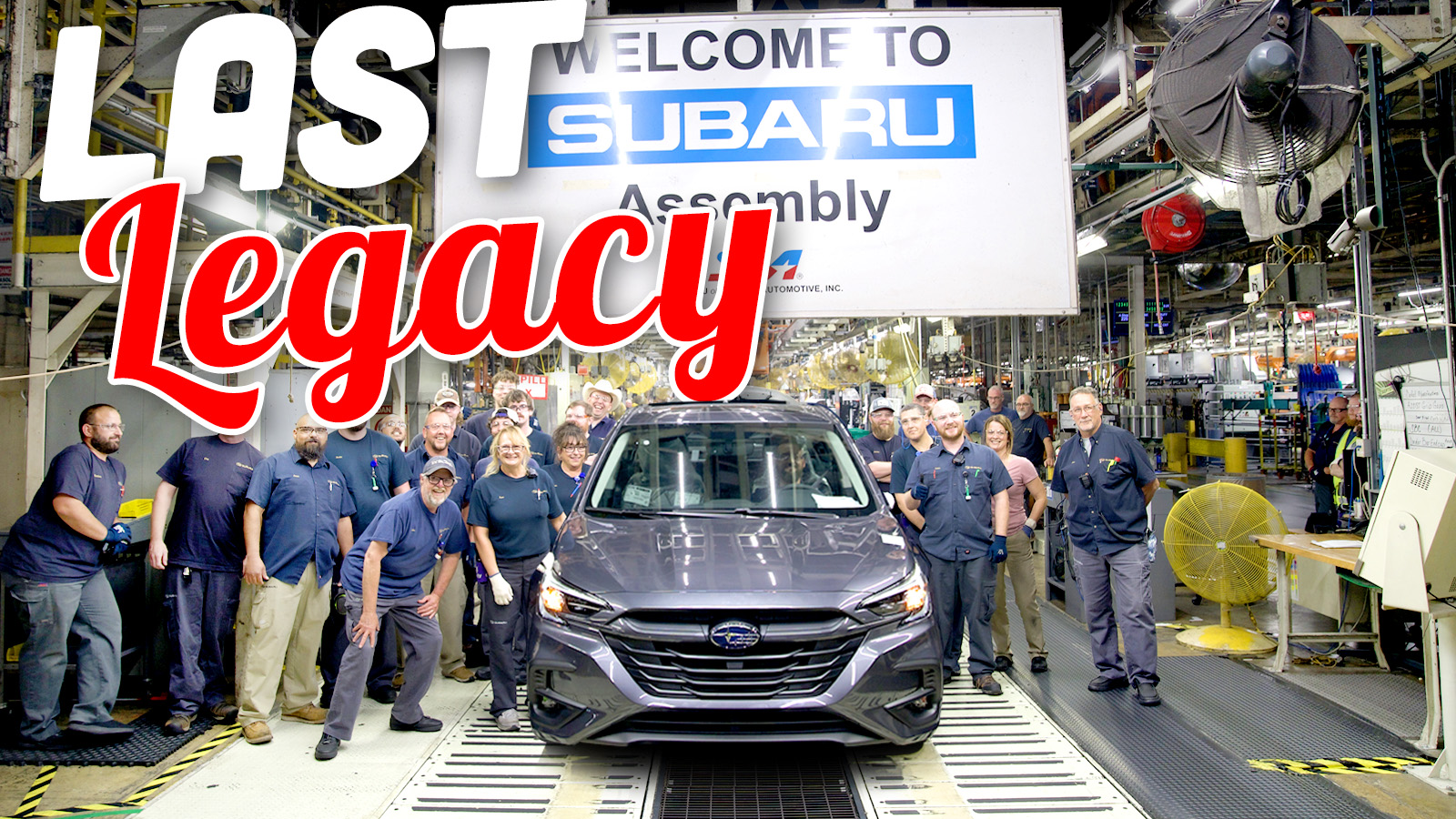I’m willing to bet genuine, damp money that this has happened to you or someone very close to you at some point: on your car or one of your cars, likely one made in the past 20 years or so, you’ve noticed an annoying flapping sound or a scraping sound. It gets progressively worse and is louder and more annoying the faster you go. It’s awful, and by now I suspect you know exactly what it is: big hunks of plastic coming loose from under your car. These plastic sheets and panels are sometimes known as splash shields or aero shields or underbody shields, something like that. They’re also one of the worst-engineered components of modern cars and are a global embarrassment that so far no automaker seems remotely interested in doing anything about.
Years ago, I wrote about what I felt was one of the biggest engineering failures in the automotive world, the scourge of sagging and falling headliners that plagued cars from the 1970s to the 1990s. I think the industry-wide epidemic of falling splash guards easily meets or even exceeds the Great Headliner Failure of decades past; the problem crops up on cars all across the automotive spectrum, and doesn’t seem to be restricted to inexpensive cars. Premium cars seem as likely as any to have their underbody plastic sheeting tear and break loose, which gives the problem a nice egalitarian character, at least, as likely to plague Mercedes-Benzes as a Hyundai.
It’s probably worth mentioning just why these shields exist in the first place, and there’s a number of very valid and reasonable explanations. They provide some aerodynamic benefit, helping to smooth out the path of airflow under the car, they prevent water and dirt and grime and other crap from being flung up into the engine bay, where it could potentially cause electrical issues or increase wear on belts and hoses, and, well, I suppose that’s pretty much it. They provide some degree of protection from scrapes and bumps, but they’re not actual skidplates, so your oil pan may still be boned if you whack it hard on a rock, plastic shield or no.
I was going to provide some links to people talking about the issue of loose or falling plastic shields, but a bit of Googling soon revealed the folly of that idea, because there are so many examples. If you just type into Google the words “plastic cover under” – not even mentioning anything about a car – you get results like this:

Look what you get: loose, fell off, came off, hanging, dragging, the state of plastic covers under cars is not a good one.
I tried one with a normal browser window and one in incognito mode, just to be sure the suggestions weren’t influenced by my previous search history, and, as you can see, even without specifying car, Google knows what’s going on, because vast numbers of people have been asking these questions, since these stupid plastic shields have been tearing off cars all over the place.
The reasons why this happens isn’t exactly rocket surgery: the plastic gets worn and tears, especially around the points where the plastic shields actually attach to the structure of the car, where it’s usually secured with plastic clips and tabs and other bits of degradable, consumable hardware. Plus, many of these shields require removal to do basic maintenance like oil changes, and that increases wear and tear on the too-fragile fasteners that hold these things on.
They’re also usually a pain in the ass to get out of the way when you just want to change your oil, and I suspect many get ripped out in during these processes.

Tomorrow I’m supposed to help a friend remove one of these shields from her Honda Fit; it’s one I’ve repaired with zip ties before, and I can’t even recall just what number of times I’ve done exactly this same job – ripping out a raggedy splash shield – for one of my own cars or a friend’s car, often done with some amount of frustration and anger in a parking lot, at night.
If your car has these plastic shields, it’s not really a matter of if it’ll get torn and start flapping around, it’s a matter of when. These are not really a solved engineering problem, by any means. They all fail, and they all fail in essentially the same, annoying ways. The holes for the plastic fasteners rip, the panels themselves rip, everything sags and flaps and oh they’re just stupid and terrible and nobody likes them!
My older cars don’t have any of these things and they survive, somehow. And, I’ve yet to meet anyone who has yanked out big chunks of ragged charcoal-gray plastic from under their cars, flung it in a dumpster, and somehow regretted it. Once these things are ripped out, perhaps your highway fuel economy drops by half a mile per gallon, perhaps your belts get more wet than before, but generally, quality of life improves.
There have to be better ways to mount these things if they’re so important, but I doubt that will actually ever happen, because that would require more money to be spent. Fastener holes could be reinforced with metal grommets, or some manner of quick-release clamping system could be used to retain the splash guards, but is any carmaker going to invest more money to make that happen? I doubt it.

From their perspective, this is hardly a problem at all. The shields start to fail long after the car has been purchased (generally) and the customer either rips the floppy plastic out or pays to have a new sheet installed. The carmakers have no downside here! This is just one of those side effects of capitalism where making something not suck just isn’t worth it, and the consumer can just shut up and deal with it.
But that doesn’t mean we have to like it! We can kvetch, loudly and boldly, and let the automotive world know we’re on to them. Underbody plastic bullshit is garbage, piping hot, cream-frosted garbage, and we’re doomed for the foreseeable future to have our cars, at some unpredictable, unexpected time start to make horrible flapping noises, requiring us to shimmy under the car and sweatily cut and yank and grab and pull out all of that near-useless, degraded plastic, and fling it into the trash, angry at the waste and senselessness of it all.
So, I’m calling this as The Biggest Modern Automotive Embarrassment. Plastic splash guards and underbody shields may be engineered for their purpose, but it appears no attempt is made to consider the longevity of these things, or how they may fail. And the result is hassle for pretty much every car owner, at some point.
Screw these things. We can do better. I have to believe that, I just have to.









Honda’s variation on this theme made me finally give up changing my own oil. An easy twenty-minute job would turn into hours and a trip to Ace Hardware. And yes, that was on my Fit. I eventually just the out the whole damn piece. I noticed no ill effects and it felt so, so good. I believe the one on my wife’s CR-V is metal (due to fantasies of off-roading pretension?) but no less of a piece of hot crap. The fasteners are about the cheapest bits on the entire car.
I currently drive a Toyota but hope to never see or deal with that piece of it.
While they could use reinforced holes for mounting, I think the vast majority of the blame for these things failing lands in two places: Bad drivers hitting things or driving through deep snow, puddles, etc. at speeds that damage them, and shitty mechanics. A bit of care in removing and installing them for maintenance goes a long way. I’ve seen mechanics leave out bolts if the holes don’t line up, or reinstall them with an impact on the bolts, squishing the plastic under the bolt head. Do that a few times and there will be nothing left of the mounting holes.
They could be better engineered to withstand these abuses but likely at a significantly higher cost.
I mean, don’t take them off like an idiot and don’t hit things. Haha, I understand things happen but they generally don’t break on their own. I have some that 25 years old and 15 on my other car. They don’t flap around or fall off and mount securely.
Though I service my own vehicle so there’s that. I don’t rip and tear them out.
Replace your clips and screws if they are damaged. Not expensive or hard.
If you wait until they flap or hit the ground then it’s generally too late.
Per usual Jason, I absolutely share your outrage, frustration, and resignation. The plastic belly pan under the motor of my old ’00 Golf TDI tore free of its moorings and came off 2 or 3 times during the couple decades + that I drove it. The first few times, I painstakingly repaired it using pop rivets to affix lovingly shaped sheet metal patches to mend tears and holes, and to reinforce the anchor points (just like those little round adhesive donuts we used to use to fix pages torn from three-ring binders in school).
By the third/fourth time it came off after I drove over a woefully filled trench in Hollywood, I just left it off. Maybe there was a bit more diesel clatter while idling, but not much. I sold my TDI last year (at 23 years, it’s the longest I’ve ever owned a car) and the buyer took the belly pan with him, though I’d be surprised if he actually goes to the trouble of mending/reinstalling it.
Sagging headliners are also a cherished pet peeve of mine. 😉 I tend to keep my cars for a while (my current pair are 20 and 29 years old) and I can’t stand it when the headliners droop. Were it an option, I’d choose a rigid headliner that’d last the life of the car, even if it make the interior seem less plush… IIRC, the ceiling of my ’79 VW camper had some sort of semi-rigid perforated cardboard (?) that didn’t sag. The headliner in the TDI started coming down when the car was barely a decade old (I also had an ’84 GTI with that burgundy velour interior which had the same problem) and I recently got a $700 estimate to install a new headliner in my ’04 Volvo XC90 (which probably isn’t a bad price, considering how big it is).
Don’t get me started about plastic exhaust manifolds in new cars. I haven’t had one of those yet, but it’s only a matter of time.
I haven’t read through all the comments but I have a candidate for best way to peel off an underbody shield:
Just drive into a puddle at 50 mph. I have dashcam footage to boot. Instead of writing out the story, I’ll upload it if there’s interest.